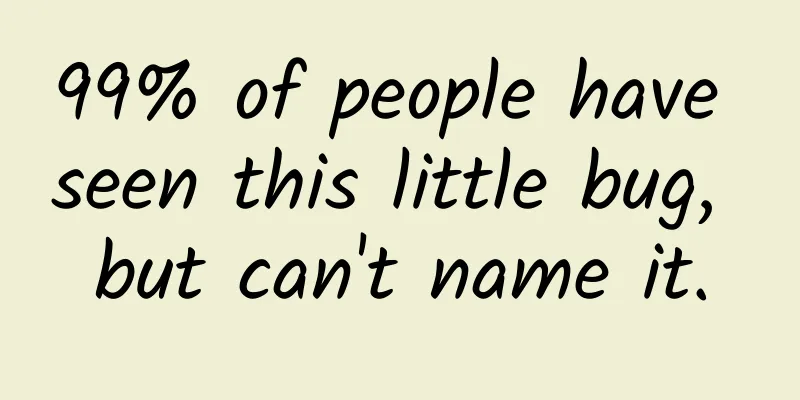A bloody incident caused by SwipeRefreshLayout

|
As for the pull-down refresh, both ordinary users and developers are familiar with it. In the past, both the pull-down refresh design and the open source control were extremely popular, so popular that it alarmed the Party Central Committee (Google), so the Party Central Committee added a pull-down refresh control in the support package - SwipeRefreshLayout. The pull-down effect is very unique and can be called low-key and gorgeous. Here is a picture first. I believe everyone is familiar with it. As for how to use SwipeRefreshLayout, I won’t explain it. If you don’t know it, go to face the wall. Swiperefreshlayout.gif As a staunch supporter of Material Design, I also used SwipeRefreshLayout in practice. I simply wrote a BaseSwipeRefreshLayout class to initialize some basic properties. Because it is easy to use, I didn't do too much encapsulation. If I need to use pull-down refresh, I directly reference this Base class in the layout, but I didn't expect that it would bury a pit and cause a bloody case. Of course, it's not that there is any error in the code of the Base class itself, but because of some strange combinations that caused some bloody bugs, let me continue to talk about it. In actual development, basically all Activities and Fragments use this pull-down refresh. My homepage is a classic design in which an Activity maintains 4 Fragments through ViewPager. The first and second pages use pull-down refresh, and Fragments use lazy loading. For lazy loading, you can read my other article ViewPager+Fragment LazyLoad*** Solution. There will be no problem with this code, and everything looks so beautiful! Rejoice, that's how confident you are. However, one day I suddenly discovered an inexplicable phenomenon: when I started the App and stayed on the first page, even if it was still, the CPU utilization was still very high, and very linear, with almost no fluctuations. When I switched to the second page, after the data was loaded, the CPU utilization went down immediately. I laughed at that time. So I started to troubleshoot and optimize. After a simple analysis, I was basically sure that the problem was on the second page. Unfortunately, the layout of my second page was very complicated. There was an automatic carousel at the top, followed by two horizontal RecyclerViews, and finally a vertical RecyclerView. Of course, there were some small views nested in between. Let's analyze the problem again: when I entered the App and stopped at the homepage, because of lazy loading, the View of the second page had been initialized, but it had not loaded Data. At this time, the CPU utilization rate was very high. When I switched to the second page and loaded Data, the CPU utilization rate immediately returned to normal. And if I didn't use lazy loading to load Fragment, there would be no problem. So first of all, I suspected that there was something wrong with my lazy loading. I debugged it and found that everything was normal and there was nothing unreasonable. According to the experience of the old driver, since the CPU has been high, it is very likely that a certain view has been measuring and calculating. The most suspicious here is RecyclerView, but I have three RecyclerViews here. I can only use the elimination method, comment them out one by one and then observe the CPU situation. However, surprisingly, even if I comment them all out, it doesn’t work. It seems that the problem is not caused by repeated measurement of View. At this time, the spearhead is directly pointed at the large carousel at the top. The carousel can scroll automatically and loop continuously. It may be that the control is not reasonable somewhere, or there is a problem with the timer. It seems that I have seen the light, and the problem should be here, so I commented out the carousel and looked again. Oh, it still doesn’t work. The problem seems to be stuck. According to the normal plot development, I should go downstairs to light a cigarette, communicate with my colleagues while smoking, then take a deep breath, exhale the light blue smoke, watch the blue smoke slowly rise, think hard, and suddenly shout: I know. Then I put out the cigarette butt fiercely and ran upstairs, leaving my colleagues in a mess in the smoke. But the actual situation is: I don't smoke. Since I can't quickly locate the problem based on subjective experience at this time, I can only use a stupid way. Still using the elimination method, I commented out all the suspicious codes line by line. At the end, I almost commented out the entire class. After debugging, there was no code to execute, only a layout was loaded. But I don't want to say but anymore. After checking all the JAVA code, I still couldn't locate the problem. I was a little worried. Was it a layout problem? OverDraw? Everything was just speculation. I could only try to eliminate the problem View by View. However, I never expected that the culprit was the BaseSwipeRefreshLayout I wrote above. I had to fill the hole I dug myself.
The above class has only a few lines, and just does some uniform initialization operations, but it causes some problems. Can you see the problem in three minutes? The problem lies in the sentence setRefreshing(true); in the init() method. When I wrote it, I thought that loading would be required as soon as the interface entered, so I might as well add loading to Base. This way, I don’t have to write it again for each interface. But because I used lazy loading in the above scenario, the problem came: although I stayed on the first page, the View of the second page had been initialized, so naturally the loading circle of SwipeRefreshLayout was already spinning, so the CPU began to be very linear and high. Switching to the second page, after the data loading was completed, setRefreshing(false), the loading circle disappeared, and the CPU returned to normal. It took a lot of effort, but fortunately, the pit was filled in the first place. Another unexpected point is that it turns out that SwipeRefreshLayout is not very fuel-efficient. The difficulty in the actual development process is not how to solve the problem, but how to troubleshoot and locate the problem. In most cases, we can quickly locate the problem based on our own accumulation and experience. But the pit I dug this time was really hidden, and it took a lot of effort to check almost line by line from JAVA code to Xml, and finally filled the pit. So we still need to consider more comprehensively in development and dig fewer pits. If we really find a pit, there are also routines to find. Carefully analyze the problem and check it step by step from JAVA code to XML, and it will always be clear. |
<<: Will Android become history? Google is launching a new operating system
>>: Heartbeat Journey - iOS uses the phone camera to detect heart rate (PPG)
Recommend
Ranking of 140 information flow platforms, who is the traffic outlet?
As a marketer , we must always pay attention to t...
Why can a can that can’t be opened be opened by tapping the bottom?
Do you like to eat this kind of canned fruit in g...
Asia Winter Science Popularization Issue 3丨Technology empowers "Improvement" of ice and snow sports safety in "Erbin"
As one of the top ten ice and snow tourism cities...
Six trends in brand experience reshaping in 2022
Red Havas, a global micro-network of integrated m...
Monkeypox Science | The "monkey" in monkeypox is not the "monkey" in monkey
On June 24, Taiwan’s Centers for Disease Control ...
Guided by the "hot product methodology", iCAR's brand upgrade is "quite interesting"
Today's new energy vehicle sector seems to be...
Eating too much of this kind of meat can lead to cardiovascular disease and diabetes! Check whether you are eating it right?
Nowadays, cardiovascular disease can be regarded ...
11 common mistakes that new entrepreneurs make
[[155037]] The process of starting a business is ...
An example analysis of Tieba user operation strategy!
User stratification refers to the purposeful form...
How to effectively promote the product in the early stage?
"Successfully executing a plan that makes no...
Among the insects you caught as a child, there was probably this little butterfly.
When I was young, I loved all kinds of insects. O...
Mengfeihaowu "Douyin Good Product Sharing Training Camp" is the current hot spot for bringing goods to realize the model, from entry to mastery
Mengfei Goods·2022 Douyin Goods Sharing Training ...
How to increase the opening rate of public accounts? Do these things well!
Maybe you often hear your colleagues and friends ...
"Nezha 2" has exceeded 10 billion box office! These three types of people are not recommended to watch the 3D version
Review expert: Peng Guoqiu, deputy chief physicia...
Apple iPhone 11 users can disable Ultra Wideband feature in iOS 13.3.1 Beta 2
Some users have reported that even after turning ...









